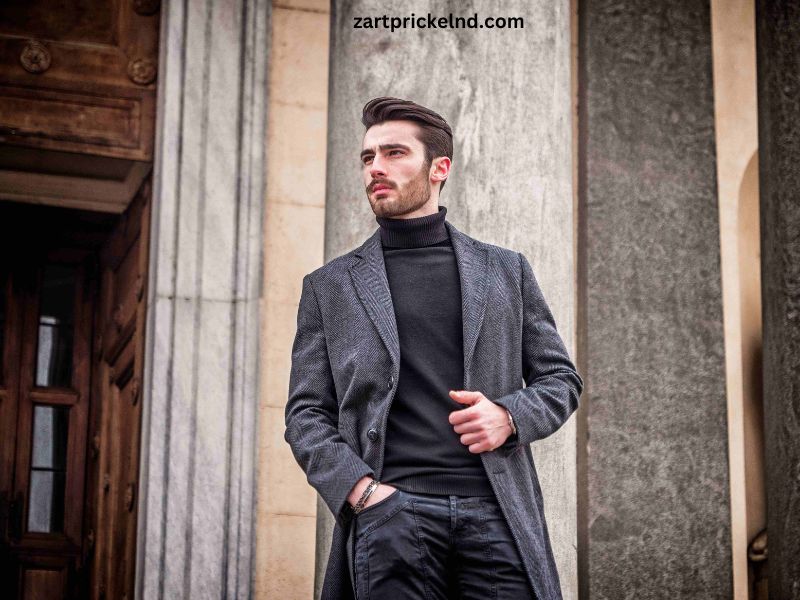Business casual attire for men refers to a style of dress that is more relaxed than traditional business formal wear, but still maintains a professional and polished appearance. This dress code typically includes items such as collared shirts, slacks, chinos, and closed-toe shoes, while avoiding more casual pieces like t-shirts, jeans, and sneakers.
The key to nailing the business casual look is to strike a balance between comfort and professionalism. You want to feel at ease in your clothing, but still convey a sense of put-together sophistication that is appropriate for a professional setting.
The importance of dressing appropriately in a professional setting
Dressing well in a professional environment is not just about personal style; it’s a crucial aspect of making a good impression and demonstrating your commitment to your work. Your appearance can influence how others perceive your competence, reliability, and attention to detail. By dressing in a business casual manner, you can communicate that you are a responsible, capable, and trustworthy individual who takes pride in their work.
Moreover, appropriate attire can also impact your own self-confidence and productivity. When you feel put-together and polished, you’re more likely to exude a sense of professionalism and authority, which can positively influence your interactions with colleagues, clients, and superiors.
Understanding the difference between business formal and business casual
While business formal and business casual may seem similar at a glance, there are distinct differences between the two. Business formal attire is the most traditional and conservative form of professional dress, typically including a suit, tie, and dress shoes. This style is often expected in more formal or conservative work environments, such as law firms, financial institutions, or government offices.
On the other hand, business casual is a more relaxed and versatile dress code that allows for greater personal expression while still maintaining a professional appearance. The key distinction is that business casual does not require the formality of a suit and tie, but rather a combination of smart, well-fitting clothing that is still appropriate for a professional setting.
Essential clothing items for a business casual wardrobe
To build a versatile business casual wardrobe, consider investing in the following essential items:
- Collared Shirts: Button-down dress shirts, polo shirts, and casual button-up shirts are all great options for a business casual look.
- Chinos or Khakis: Well-fitted, pressed chinos or khakis in neutral colors like beige, navy, or gray are a staple of the business casual style.
- Dress Pants: Tailored, flat-front dress pants in wool or cotton blends can also be a part of a business casual ensemble.
- Blazers or Sport Coats: A well-fitted blazer or sport coat can instantly elevate a business casual outfit, adding a touch of sophistication.
- Dress Shoes: Oxfords, loafers, or brogues in leather or suede are appropriate footwear choices for a business casual look.
- Sweaters: Lightweight, v-neck or crew-neck sweaters can be layered over collared shirts for a polished, yet comfortable, appearance.
By having these core pieces in your wardrobe, you’ll be able to mix and match them to create a variety of stylish and professional business casual outfits.
Tips for putting together a stylish and professional business casual outfit
When assembling a business casual outfit, keep the following tips in mind:
- Focus on Fit: Ensure that your clothing is well-fitted and tailored to your body shape. Ill-fitting garments can make even the most expensive pieces look sloppy.
- Stick to Neutral Colors: Opt for a color palette of neutrals, such as navy, gray, beige, or black, as the foundation of your outfit. These colors are versatile and easy to coordinate.
- Layer Strategically: Incorporate layers like blazers, sweaters, or vests to add visual interest and depth to your look.
- Pay Attention to Fabric Quality: Choose high-quality, breathable fabrics like cotton, linen, or wool that will help you maintain a polished appearance throughout the day.
- Accessorize Thoughtfully: Incorporate accessories like watches, belts, or pocket squares to elevate your outfit and showcase your personal style.
By following these tips, you can create a business casual look that is both stylish and professional.
How to accessorize your business casual look
Accessories can be a powerful tool for elevating a business casual outfit and adding a touch of personal flair. Some key accessories to consider include:
- Watches: A well-chosen watch, whether it’s a classic analog or a sleek, minimalist design, can instantly add an air of sophistication to your look.
- Belts: A coordinating leather or fabric belt can help pull your entire outfit together and create a cohesive, polished appearance.
- Pocket Squares: A neatly folded pocket square in a complementary color or pattern can add a sophisticated finishing touch to a blazer or sport coat.
- Ties: While not strictly required for business casual, a slim, knit, or patterned tie can be a stylish addition to certain outfits.
- Cufflinks: For a touch of refined elegance, consider incorporating cufflinks, especially when pairing a dress shirt with a blazer or sport coat.
The key is to choose accessories that enhance your overall look without overpowering the ensemble. Experiment with different combinations to find what works best for your personal style and the specific occasion.
Common mistakes to avoid when dressing business casual
While the business casual dress code may seem more relaxed than traditional business formal attire, there are still some common mistakes to avoid:
- Overly Casual Clothing: Steer clear of items like t-shirts, jeans, shorts, or sneakers, as these are generally too casual for a business casual setting.
- Ill-Fitting Garments: Ensure that your clothing is well-tailored and flattering to your body shape. Baggy or oversized pieces can make you look sloppy.
- Overdressing: While it’s important to maintain a professional appearance, you don’t want to be the most formally dressed person in the room. Avoid wearing a full suit and tie, as this can come across as too formal for a business casual environment.
- Forgetting to Iron: Always make sure your clothing is neatly pressed and free of wrinkles. A crisp, well-maintained appearance is essential for a polished business casual look.
- Neglecting Grooming: Pay attention to your personal grooming, such as keeping your hair neat and tidy, trimming facial hair, and maintaining good posture.
By being mindful of these common pitfalls, you can ensure that your business casual attire consistently projects a professional and put-together image.
Business casual outfit ideas for different occasions
The beauty of business casual attire is its versatility. Depending on the specific occasion, you can adjust your outfit to strike the right balance between comfort and professionalism. Here are some examples of business casual outfits for different scenarios:
Everyday Office Wear:
- Collared shirt (e.g., button-down, polo, or casual button-up)
- Chinos or dress pants
- Blazer or sweater (optional)
- Leather or suede dress shoes
Client Meetings or Presentations:
- Button-down shirt
- Tailored dress pants or chinos
- Sport coat or blazer
- Leather dress shoes
- Tie (optional)
Networking Events or Conferences:
- Collared shirt (e.g., polo, casual button-up, or lightweight button-down)
- Chinos or dress pants
- Blazer or sweater vest
- Leather or suede dress shoes
Casual Fridays or Company Outings:
- Polo shirt or casual button-up
- Chinos or dark-wash denim jeans
- Sweater or lightweight jacket
- Loafers or boat shoes
Remember, the key is to strike a balance between professional and relaxed, ensuring that your outfit is appropriate for the specific setting and occasion.
Where to buy business casual clothing for men
When it comes to building a versatile business casual wardrobe, there are numerous retailers and brands that offer high-quality, stylish options. Some top choices include:
- Menswear Specialty Stores: Stores like Banana Republic, J.Crew, and Bonobos specialize in modern, well-fitted business casual attire.
- Department Stores: Stores like Nordstrom, Macy’s, and Brooks Brothers have dedicated sections for business casual clothing and accessories.
- Online Retailers: E-commerce platforms like Zappos, Asos, and The Tie Bar offer a wide selection of business casual pieces with the convenience of online shopping.
- Ethical and Sustainable Brands: Consider brands like Everlane, Outerknown, and Faherty that prioritize ethical and sustainable manufacturing practices.
- Thrift and Consignment Stores: You can often find high-quality, gently used business casual items at thrift stores or consignment shops, which can be a more budget-friendly option.
When shopping for business casual clothing, focus on investing in well-made, versatile pieces that will last you for years to come. Pay attention to factors like fabric quality, fit, and timeless design to ensure that your wardrobe remains stylish and professional.
Conclusion
Navigating the world of business casual can seem daunting at first, but with the right approach, it can be a highly rewarding and versatile way to dress for the professional environment. By understanding the key elements of business casual attire, investing in essential clothing items, and learning how to accessorize effectively, you can create a polished and personalized look that will help you feel confident and comfortable in any professional setting.
Explore our curated selection of high-quality business casual clothing and accessories to elevate your professional wardrobe. Shop now and discover the perfect pieces to help you make a lasting impression.



